Driving the North Klondike Highway, Dawson to Whitehorse
We pulled away from Dawson City just after 2:00 pm on Saturday, September 24th. I wanted to be home in Whitehorse in not much over 24 hours, but there were a few stops I wanted to make along the North Klondike Highway on the way.
Approaching the Dawson airport (CYDA), I noticed a big “X” of flashing lights on the runway. It was closed for resurfacing – meaning grading, as it’s a gravel runway. I decided to stop and have a look at the Klondike River Campground, which I hadn’t seen yet.
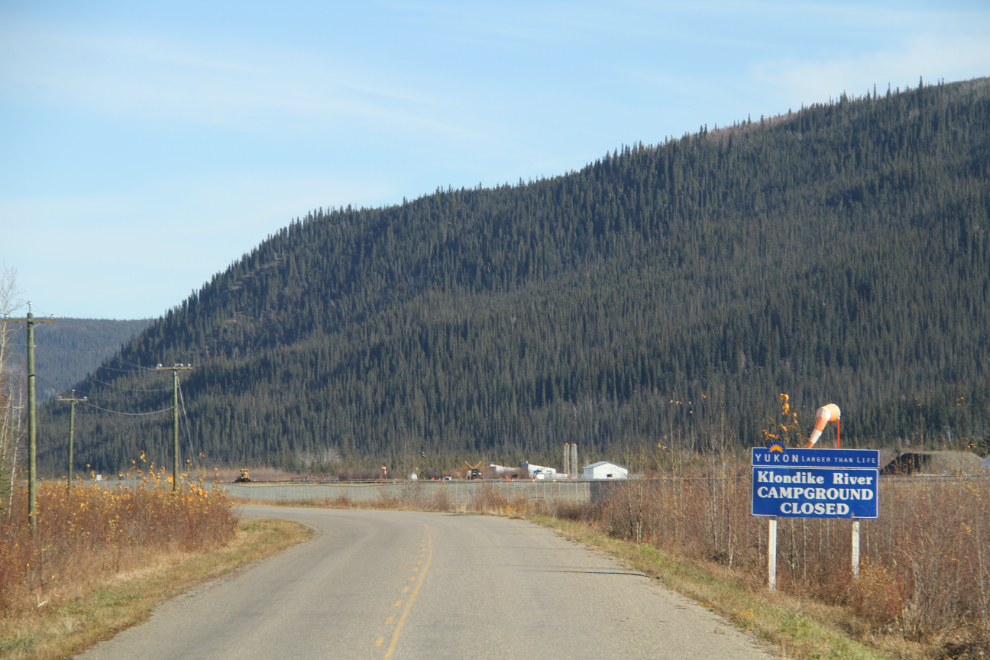
The Klondike River Campground is small and feels old. Sites, for a Yukon campground, are small, and the road is narrow, winding, and was heavily pot-holed. Not very big-rig friendly at all. Despite the name, I didn’t see any river access, and the location is rather odd in any case, so I can’t imagine that we’ll ever camp there.
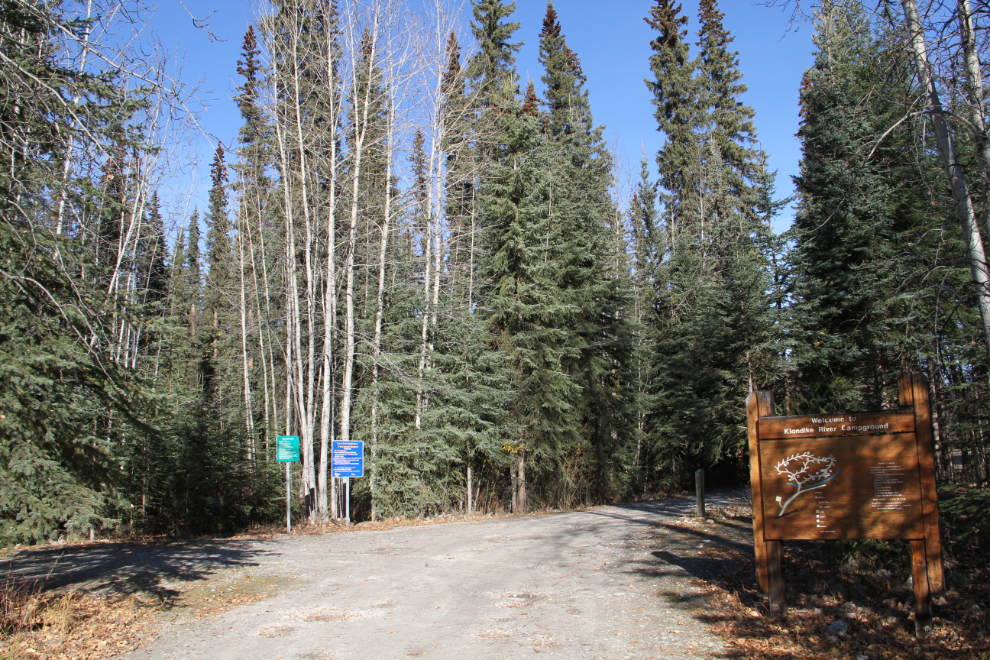
I had one detour to make. This is the Dempster Highway, looking north at Km 6. I wanted to see the North Fork Ditch and power plant near here, but the access road was blocked by some hunters who were after a moose in a marsh beside the road.

I didn’t get my dam or ditch up the Dempster, but I did get a damn flat tire. That’s my second flat ever in 40-odd trips on the Dempster. And the tailpipe hangar had broken, so I had some repairs to do – after our afternoon nap 🙂 I got very lucky – the tire went flat once I reached the motorhome, which I had left at the Mile 0 pullout.
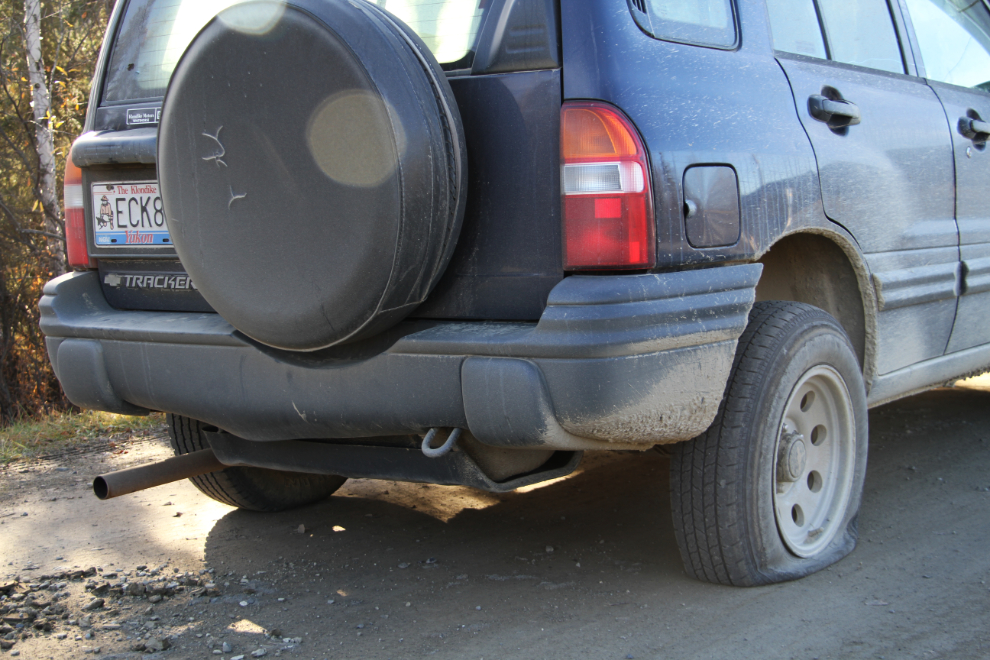
At 7:25 pm, I was nearing Moose Creek Campground, where we had camped when northbound, so that would be our home for the night.
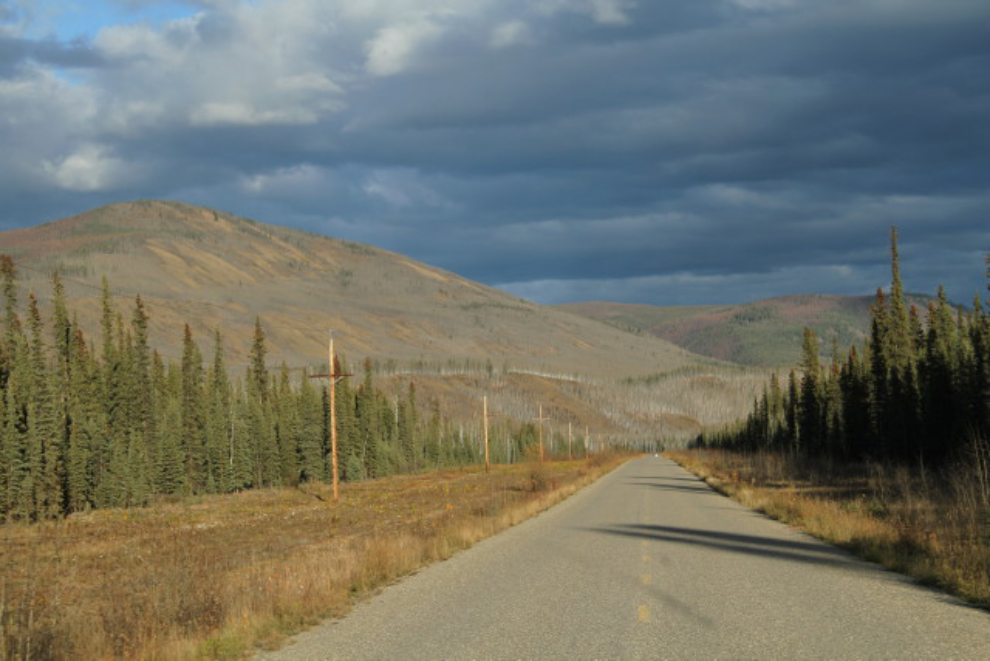
Moose Creek Campground really surprised me, because I don’t recall never hearing anybody mention. But everything about it is excellent, even the location for breaking up the Dawson-Whitehorse drive. It has 36 sites, with 4 pull-throughs, and the entire campground is big-rig friendly. I say it often but will say it again: at $12 per night including firewood, the Yukon system has to be the best camping value in North America.

I took site #20 at the back end of the campground again. After a couple of long dog walk/plays and then a quiet night (there was only 1 other camper overnighting in the park), we were ready to get back on the road at 08:30.
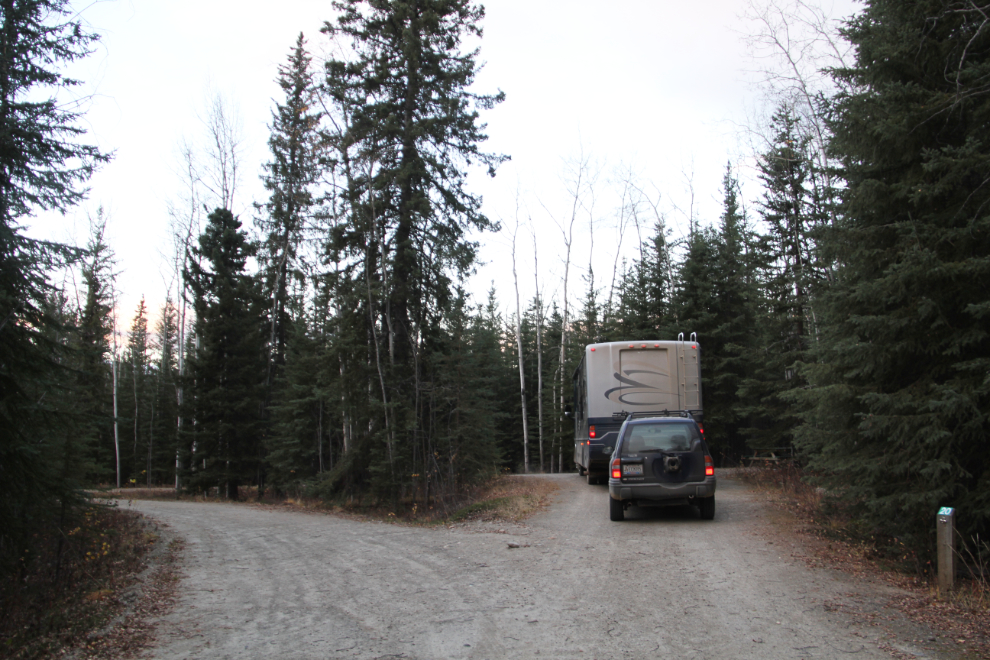
Tucker is a funny little dude. I stopped at the Stewart Crossing rest area, and he went nuts at the life-size caribou cut-out on the wall of the information building. When I took the photo, he’d quit barking and was just growling at the threat. We’ve got him to stop most of his barking, but he’s always nattering at anything that moves or might move, or is just “out there” in his imagination 🙂
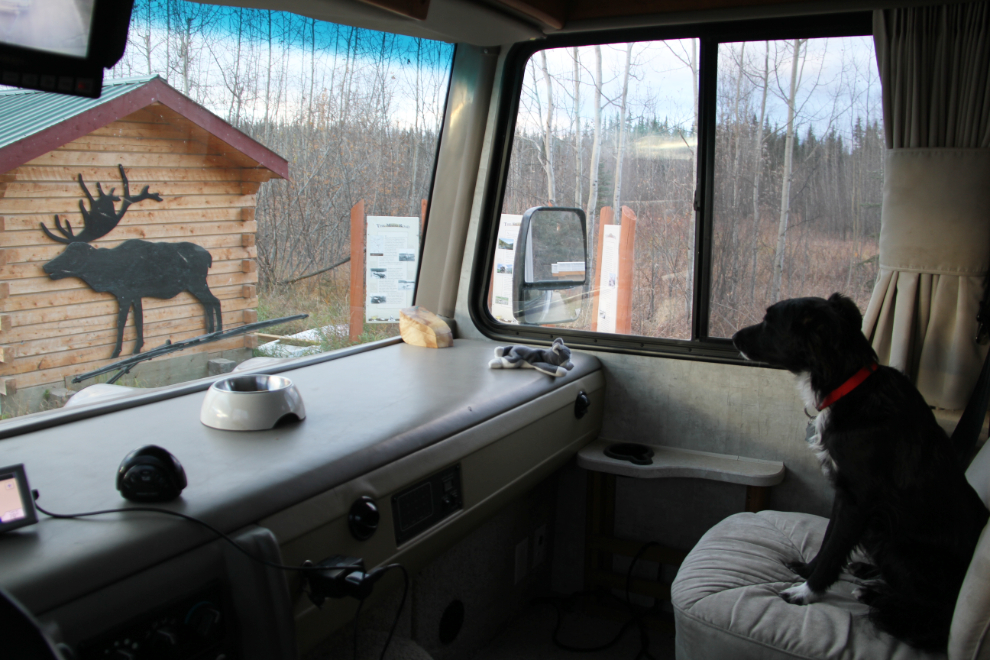
The light at Five Finger Rapids was gorgeous, but I just couldn’t muster the energy to climb the 220 steps. And the steps were frosty, for an extra excuse!
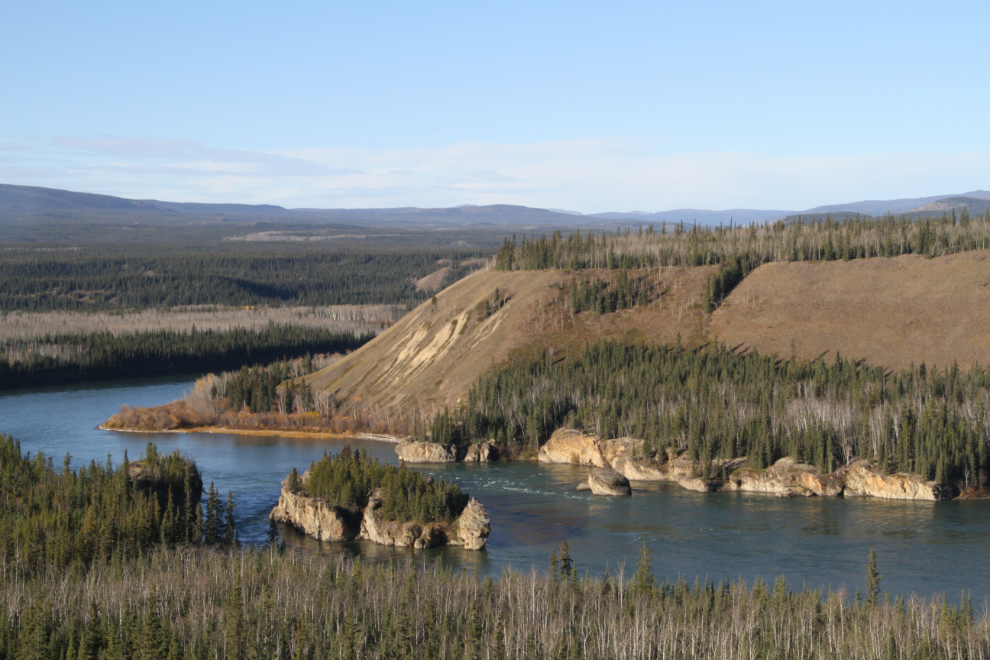
By noon, I had gethomeitis, but wanted to get some photos of the Twin Lakes Campground for a campground resource I’m going to start building. Twin Lakes is probably the furthest one that gets a lot of pressure from Whitehorse weekenders – in the summer, it’s full every weekend. And with good reason – the lakes are beautiful and the campground facilities are excellent. There was only 1 camper there, a Whitehorse woman who had spent 4 nights there with her dog.

Bella has become quite a water-dog. While she won’t swim very far at all, she loves wading, and Twin Lakes was perfect for it.
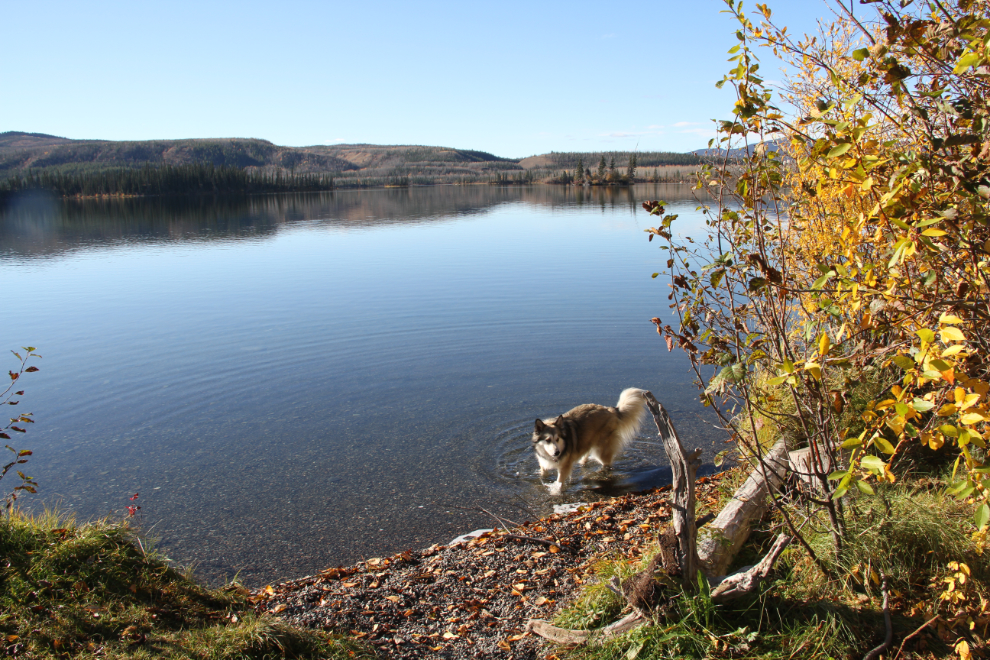
I stopped at a car wash and spent $20 to get the worst of the mud and gravel off the Tracker in particular, and got home at about 3:00 pm. It was a wonderful trip. I’d been sorry to have not made it to Dawson this year, and now that’s taken care of.
Before I even got this post written, I was back on the road. As I finish it, I’m on Day 2 out in the wilderness along the Haines Road, near the summit, for 3 days of chilly high-country hiking.